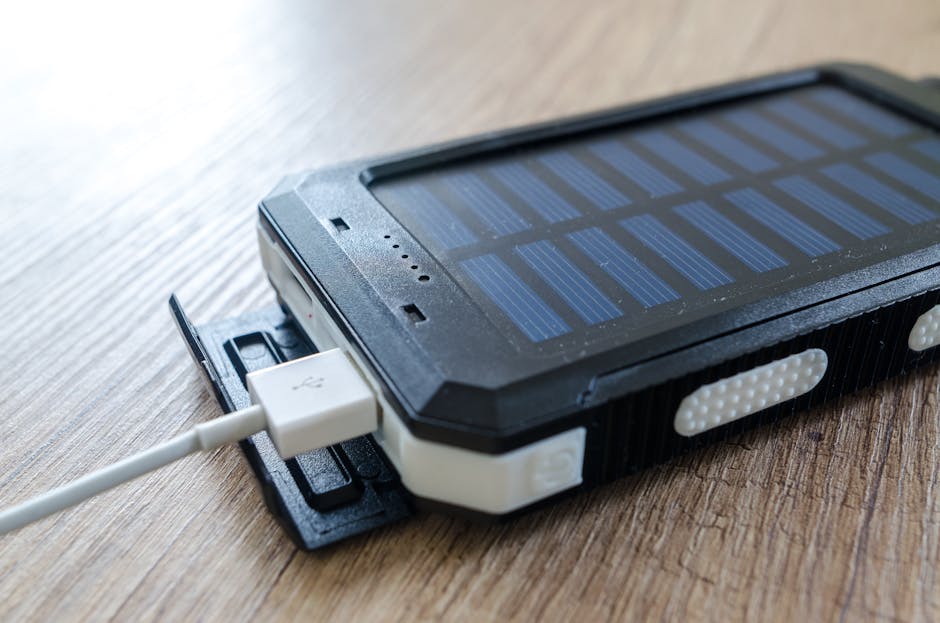Thunderbolt Solar 100 Watt Solar Charge Regulator
In today’s world, where sustainability and renewable energy are becoming increasingly important, solar power stands out as a viable solution for many. One of the key components in harnessing solar energy effectively is the solar charge regulator. Among the various options available, the Thunderbolt Solar 100 Watt Solar Charge Regulator has gained attention for its efficiency and user-friendly features. This article will explore everything you need to know about this solar charge regulator, from its functionality to installation tips, ensuring you can make the most of your solar energy system.
What is a Solar Charge Regulator?
Before diving into the specifics of the Thunderbolt Solar 100 Watt Solar Charge Regulator, it’s essential to understand what a solar charge regulator is and why it’s crucial for solar energy systems.
- Definition: A solar charge regulator, also known as a solar charge controller, is a device that manages the power going into and coming out of a battery bank from solar panels.
- Function: Its primary function is to prevent overcharging and deep discharging of batteries, which can significantly extend their lifespan.
- Types: There are two main types of solar charge regulators: PWM (Pulse Width Modulation) and MPPT (Maximum Power Point Tracking). The Thunderbolt Solar model typically uses PWM technology.
Key Features of the Thunderbolt Solar 100 Watt Solar Charge Regulator
The Thunderbolt Solar 100 Watt Solar Charge Regulator comes packed with features that make it a popular choice among solar energy enthusiasts. Here are some of its standout characteristics:
- Compatibility: Designed to work with 12V and 24V systems, making it versatile for various solar setups.
- LCD Display: The built-in LCD screen provides real-time information about battery voltage, charging status, and load status, allowing users to monitor their system easily.
- Overload Protection: This regulator includes built-in protections against overcharging, over-discharging, and short circuits, ensuring the safety of your solar system.
- Easy Installation: With clear instructions and a straightforward design, even beginners can install this regulator without hassle.
- Durability: Built to withstand various weather conditions, the Thunderbolt Solar regulator is designed for longevity and reliability.
How Does the Thunderbolt Solar Charge Regulator Work?
Understanding how the Thunderbolt Solar Charge Regulator operates can help you maximize its benefits. Here’s a simplified breakdown of its working mechanism:
- Solar Panel Input: The solar panels convert sunlight into electricity, which is then sent to the charge regulator.
- Voltage Regulation: The regulator monitors the voltage coming from the solar panels and adjusts it to ensure that the batteries are charged at the correct voltage level.
- Battery Charging: Once the batteries reach their full charge, the regulator prevents any further charging, protecting the batteries from damage.
- Load Management: The regulator also controls the power output to connected devices, ensuring they receive a stable voltage.
Installation Guide for the Thunderbolt Solar Charge Regulator
Installing the Thunderbolt Solar 100 Watt Solar Charge Regulator is a straightforward process. Here’s a step-by-step guide to help you set it up:
What You Will Need
- Thunderbolt Solar 100 Watt Solar Charge Regulator
- Solar panels (compatible with your system)
- Battery bank (12V or 24V)
- Wiring tools (wire cutters, connectors, etc.)
- Mounting hardware (if necessary)
Step-by-Step Installation
- Choose a Location: Select a dry, well-ventilated area to mount the regulator, ideally close to the battery bank.
- Connect the Solar Panels: Connect the positive and negative wires from the solar panels to the corresponding terminals on the regulator.
- Connect the Battery Bank: Next, connect the battery bank to the regulator, ensuring the positive and negative terminals are correctly aligned.
- Connect the Load: If you have devices that will draw power from the battery, connect them to the load terminals on the regulator.
- Power Up: Once all connections are secure, power up the system and check the LCD display for status indicators.
Benefits of Using the Thunderbolt Solar Charge Regulator
Investing in the Thunderbolt Solar 100 Watt Solar Charge Regulator comes with several advantages:
- Enhanced Battery Life: By preventing overcharging and deep discharging, this regulator helps extend the lifespan of your batteries.
- Cost-Effective: With its affordable price point and efficient performance, it offers great value for money.
- Environmentally Friendly: Utilizing solar energy reduces reliance on fossil fuels, contributing to a greener planet.
- User-Friendly: The LCD display and straightforward installation make it accessible for users of all experience levels.
Common Issues and Troubleshooting
While the Thunderbolt Solar Charge Regulator is designed for reliability, users may encounter some common issues. Here are a few troubleshooting tips:
- No Charging: Check all connections to ensure they are secure. Verify that the solar panels are receiving adequate sunlight.
- LCD Display Not Working: Ensure the regulator is powered correctly. If the display remains off, consider checking the fuse or replacing the unit.
- Overheating: Ensure the regulator is installed in a well-ventilated area. If it continues to overheat, consult the manufacturer for further assistance.
Conclusion
The Thunderbolt Solar 100 Watt Solar Charge Regulator is an excellent choice for anyone looking to harness solar energy effectively. With its user-friendly features, robust protection mechanisms, and easy installation process, it stands out as a reliable component of any solar power system. By understanding how to use and maintain this regulator, you can ensure that your solar energy setup operates efficiently, providing you with clean, renewable energy for years to come.




